Mastering the Echeveria Flowering Process: A Guide
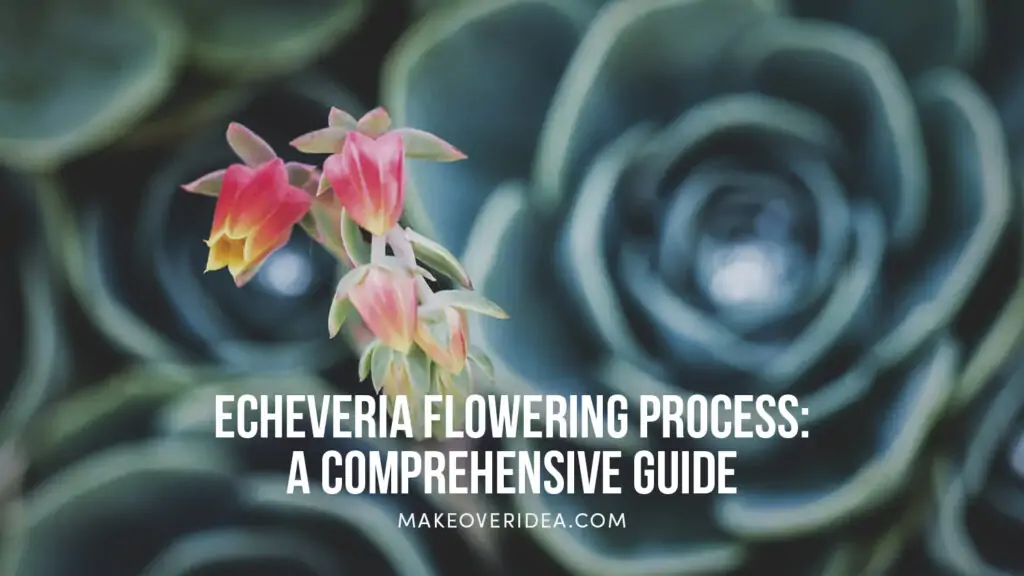
Echeverias are a popular group of succulent plants known for their captivating beauty and vibrant flowers. The Echeveria flowering process is a fascinating event that brightens up any space, making these plants a favorite among gardeners and plant enthusiasts.
In this guide, we’ll delve into the world of Echeveria, exploring its origin, varieties, and flowering process. By understanding the factors that influence Echeveria blooming and the proper care techniques, you can enjoy these stunning plants in all their glory.
The Echeveria Plant: An Overview
Here is some general information about this outstanding succulent.
Origin and Characteristics
Echeveria is a genus of succulent plants that are indigenous to Central and South America, primarily Mexico. These are members of the Crassulaceae family and are named for the Mexican botanist Atanasio Echeverra y Godoy, who lived in the 18th century.
Echeverias are distinguished by their thick, rosette-shaped, multicolored leaves, which might be green, blue, pink, or even purple. The drought tolerance of these succulents makes them perfect for xeriscaping and low-water landscapes. Echeverias are popular as decorative plants due to their distinct appearance and low maintenance requirements.
Popular Echeveria Varieties
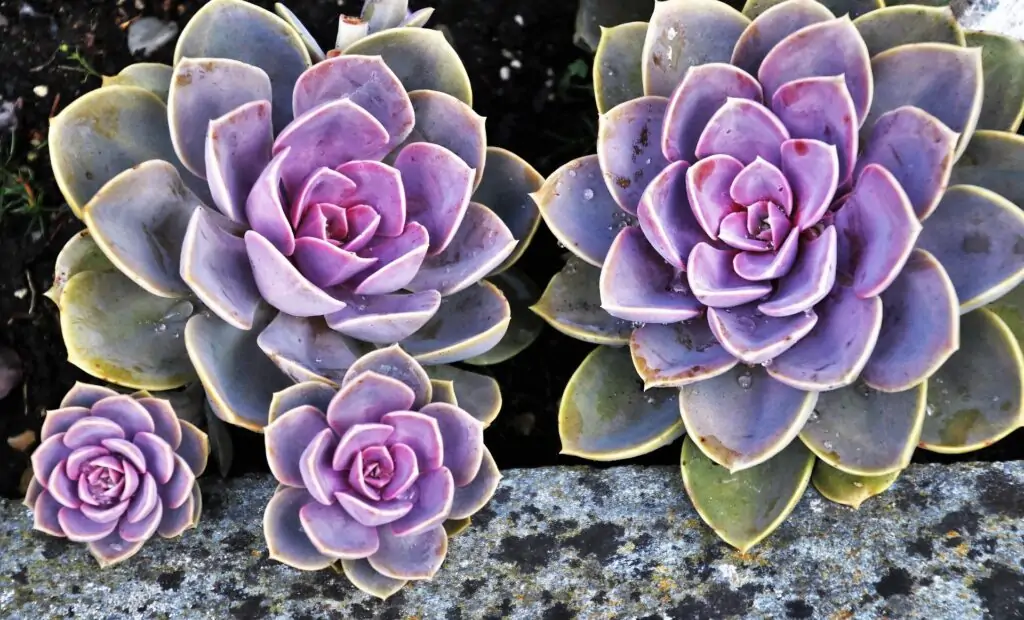
There are more than 150 species of this outstanding succulent, each with its distinctive characteristics. Some popular varieties include:
- ‘Perle von Nürnberg’: Known for its striking lavender and pink-toned leaves with a powdery appearance.
- ‘Black Prince’: A dark-colored variety with deep green to nearly black leaves that is known to produce bright red flowers.
- ‘Topsy Turvy’: An unusual cultivar with curved, silvery-blue leaves that twist around the center of the rosette.
- ‘Lola’: A lovely hybrid with a pale, silvery-lavender hue and a slightly upturned leaf shape.
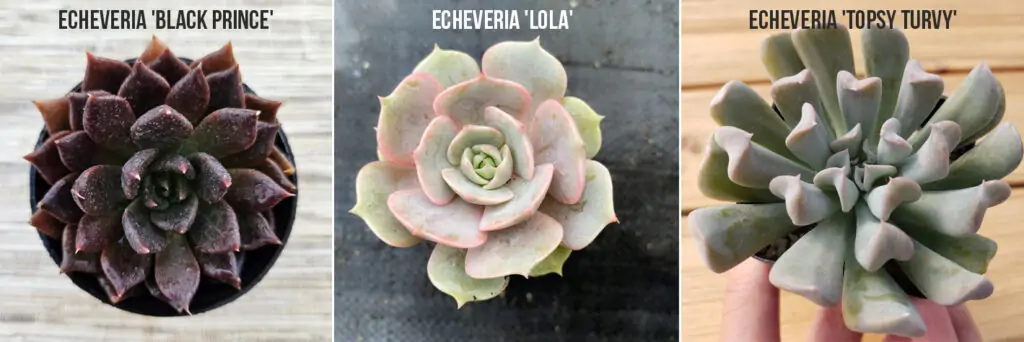
The Flowering Process of Echeveria
In summer, when there is a lot of sunlight, nothing is more beautiful than Echverias in bloom. Here is how this process takes place.
Stages of Echeveria Bloom
The Echeveria flowering process can be divided into several stages:
- Bud formation: Initially, tiny flower buds appear on the elongated stalks, known as inflorescences, that emerge from the center of the rosette.
- Growth and development: The flower stalks continue to grow, with the buds developing and maturing.
- Flower opening: The buds begin to open, revealing the vibrant petals of beautiful flowers. These flowers typically form in clusters and come in various colors, such as red, orange, pink, and yellow.
- Pollination: Blossoms of the succulent attract pollinators such as bees and hummingbirds, aiding the plant’s reproduction.
- Fading and senescence: The flowers fade and eventually wither away after pollination.
Seasonal Blooming Patterns
Echeverias generally bloom during the warmer months, typically from late spring to the end of summer and even to early fall. The exact timing of flowering varies depending on the species and growing conditions. Some Echeverias may produce multiple blooms during the season, while others may only flower once. Providing the right balance of light, water, and nutrients is essential to encourage your Echeveria to bloom and showcase its stunning flowers.
Ideal Growing Conditions for Echeveria
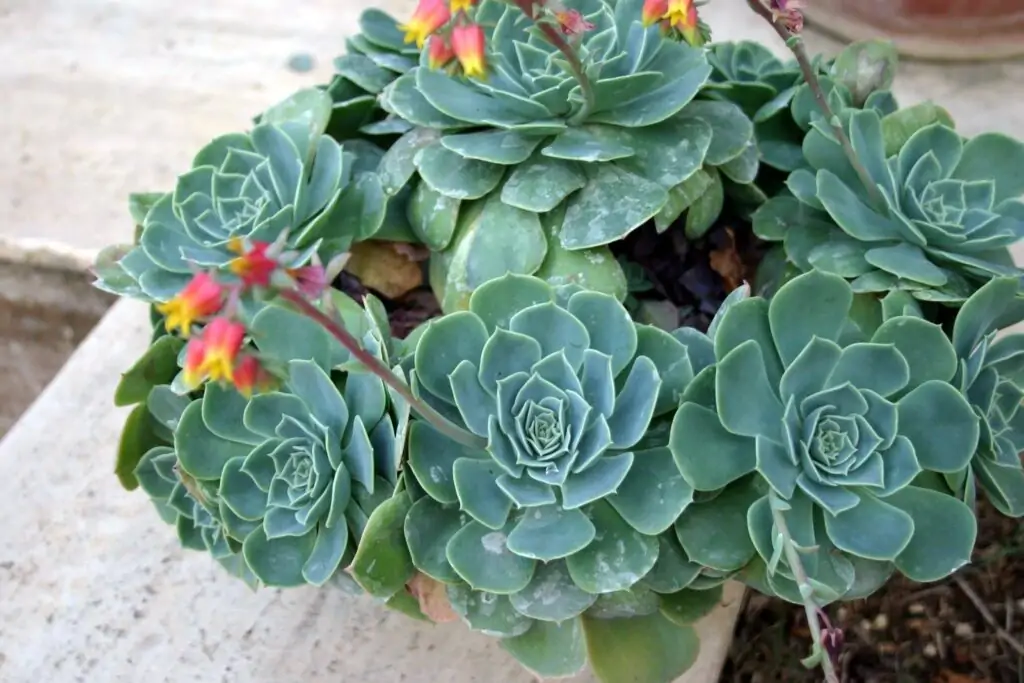
Here is what you need to do to adorn your summer months with Echeverias in bloom.
Light Requirements for Flowering
These succulents require indirect, strong sunlight for optimal development and blooming. They can tolerate a few hours of direct sunshine per day, particularly in the morning and late afternoon. However, continuous exposure to intense sunlight may result in sunburn or leaf damage. Place your plants inside near a south- or west-facing window to ensure they receive sufficient light. If natural light is insufficient, grow lights can be used to encourage healthy plant development and flowering process.
Watering Practices for Echeveria
Watering is essential for the health and flowering of Echeveria. These succulents are drought-tolerant plants that require the “soak and dry” method of watering. Before watering again, thoroughly saturate the soil and allow it to dry out entirely. It is necessary to allow the soil to dry out between waterings to prevent root rot and other health problems. During their flowering process, Echeverias may require slightly more regular watering to sustain the increased energy required for bloom formation.
Temperature and Climate Preferences
These plants prefer warm temperatures and can tolerate a wide range of conditions. They thrive in temperatures between 65°F and 80°F (18°C to 27°C) and can withstand temperatures as low as 45°F (7°C) for short periods. However, prolonged exposure to freezing temperatures may damage the plants. In colder climates, it’s best to grow Echeverias in containers and bring them indoors during winter to protect them from frost.
Care and Maintenance During Flowering
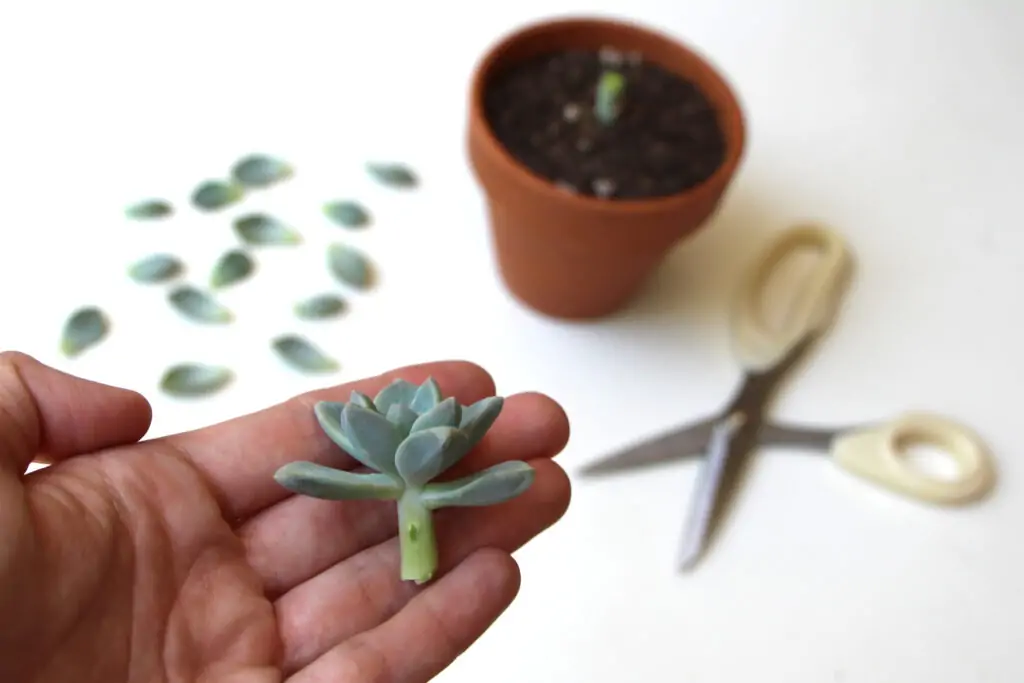
Here is how to care for your Echeverias when they bloom.
How to Encourage Echeveria to Flower
To promote flowering in your Echeverias, follow these tips:
- Ensure your succulent receives sufficient bright, indirect sunlight to promote good development and flowering.
- Keep proper irrigation: Use the “soak and dry” approach to water your plant, allowing the soil to dry out between waterings.
- Throughout the growing season, fertilize: During the busy growing months, apply a balanced, slow-release fertilizer or a diluted liquid fertilizer explicitly developed for succulents.
- Pruning and removing dead leaves: Remove dead or damaged leaves from the plant’s base regularly to encourage new growth and blossoming.
Should You Cut Echeveria Flowers?
Cutting the flowers of this plant is a matter of personal preference. Some gardeners choose to cut the flowers to encourage the plant to focus its energy on producing more leaves and pups. Others prefer to let the flowers remain on the plant for aesthetic purposes. If you decide to cut the flowers, use clean, sharp pruning shears or scissors and cut the flower stalk as close to the base as possible without damaging the main plant.
Post-Flowering Care for Echeveria
Once your succulent has finished flowering, follow these steps to ensure proper care:
- Remove the spent flower stalks: Gently cut the flower stalks at their base to prevent rot or disease.
- Inspect the plant for pests: Flowering can sometimes attract pests, so keep an eye out for any signs of infestation and treat it accordingly.
- Continue proper care: Maintain the appropriate light, watering, and temperature conditions for your succulent, and resume regular fertilization during the growing season.
By following these guidelines, you can enjoy the beautiful Echeveria flowering process and ensure the health and longevity of your plant.
Propagation and Growth of Echeveria
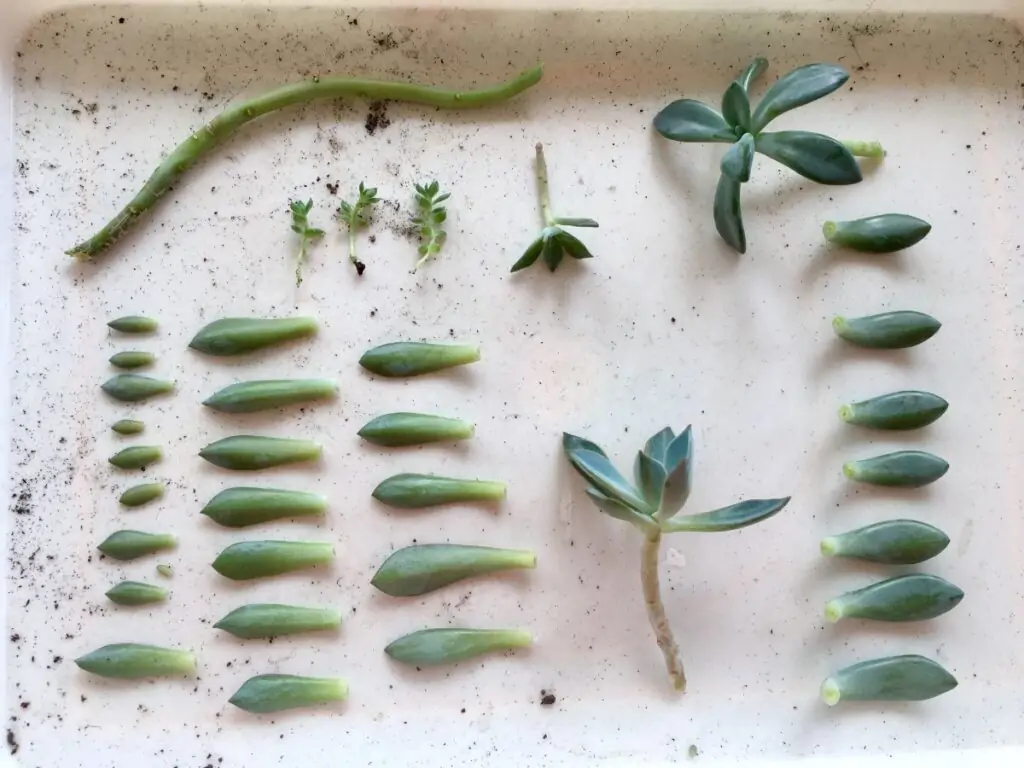
Here is how you can propagate your beautiful succulents.
Propagating Echeveria from Leaves and Cuttings
Echeverias may be replicated simply from stem or leaf cuttings, allowing you to create new plants from an existing plant. For leaf propagation, take a healthy leaf from the plant’s base and let it to callus (i.e., to form protective tissue) for several days. Finally, set the leaf on well-draining soil and maintain a wet environment until roots and a new plantlet emerge.
You must use a clean, sharp knife or pruning shears to cut a healthy stem from the main plant for stem cuttings. Always allow your cuttings to callus over for a few days. A few weeks after keeping the soil mildly moist, roots should sprout.
Maximizing Echeveria Growth and Health
To ensure your Echeverias reach their full potential, follow these tips:
- Provide adequate light: Ensure your succulent receives sufficient bright, indirect sunlight.
- Maintain proper watering: Follow the “soak and dry” watering method, and adjust the frequency based on the season and environment.
- Fertilize during the growing season: Use a balanced, slow-release fertilizer or a diluted liquid fertilizer specifically formulated for succulents.
- Repot when necessary: Repot your succulent every 2-3 years or when the plant outgrows its current container, using well-draining soil and a pot with drainage holes.
Common Echeveria Flowering Concerns
Here is how you can address some concerning matters.
Why Isn’t My Echeveria Flowering?
If your plant isn’t flowering, consider these factors:
- Insufficient light: Ensure your succulent receives bright enough, indirect sunlight.
- Inadequate watering: Follow the “soak and dry” method, and adjust the frequency based on the season and environment.
- Lack of nutrients: Fertilize your plant during the active growing months.
- Age: Young Echeverias may not be mature enough to flower. Be patient and continue to provide proper care.
Dealing with Stretched Echeveria Stalks
The stalks of the plant can become stretched or elongated when the plant isn’t receiving enough light, a condition known as etiolation. To address this, move your succulent to a brighter location or supplement it with grow lights. You can also prune the stretched parts, allowing the plant to focus on new, compact growth.
Addressing Overwatering and Stress in Echeverias
Overwatering these succulents is a prevalent problem resulting in root rot, fungal infections, and other issues. Use the “soak and dry” strategy and ensure the soil dries out between waterings. Symptoms of stress in Echeverias include yellowing, withering, and falling leaves. To help your plant recover, address the cause of stress (such as insufficient light or poor watering).
FAQs
Here are the answers to some commonly asked questions about these beautiful succulents.
The Echeveria flowering process can last several weeks, depending on the variety and environmental conditions.
Propagating these succulents from flower stalks is not usually successful, as the stalks typically don’t produce roots. It’s better to reproduce them from leaves or stem cuttings.
Most varieties of this succulent produce flowers, but the size, color, and blooming season can vary between species.
During the flowering period, continue to follow the “soak and dry” watering method. Monitor the moisture level in the soil, and water your plants when the soil is dry to the touch. Adjust the frequency based on the season and environment, typically watering less frequently during winter months and more frequently during the growing season.
Conclusion
The Echeveria flowering process is a captivating event that adds a layer of beauty to these already stunning succulents. Understanding the ideal growing conditions, proper care, and common concerns related to Echeveria flowering will help you create the best environment for your plant to thrive and bloom.